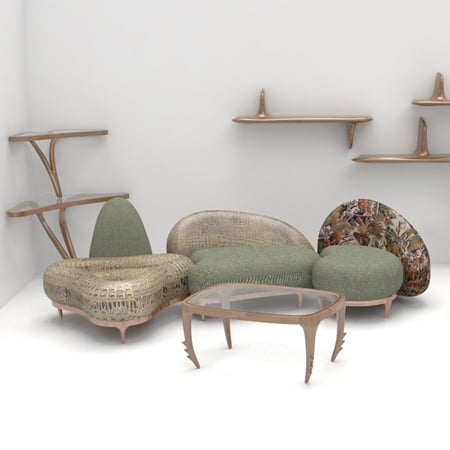
Animalia by Nigel Coates for Fratelli Boffi
Milan 2010: In Milan next month London architect Nigel Coates will launch a collection of furniture including modular seating with pebble-like forms upholstered in tweed, leather and tapestries of hunting scenes.
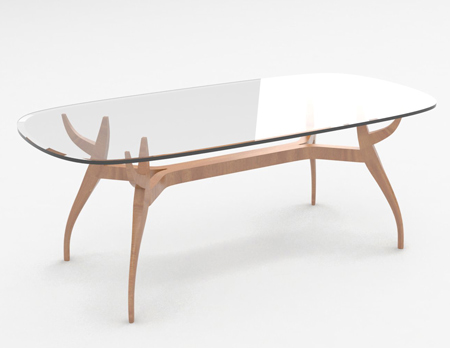
Called Animalia, the series will also feature a dining table with wooden legs carved to look like a stags' horns.
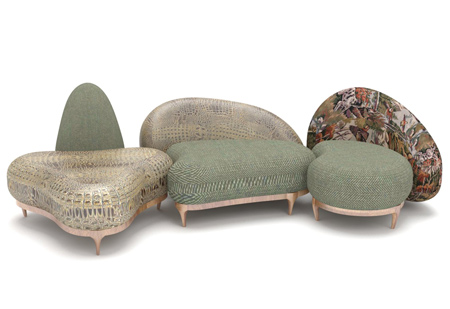
The series was designed by Coates for Italian brand Fratelli Boffi
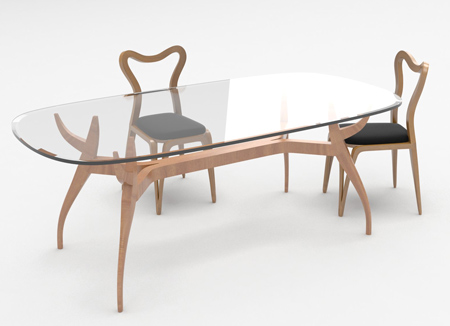
See all our stories about Milan 2010 in our special category.
More about Nigel Coates on Dezeen:
Tokyo Designers Week interview (November 2009)
Molteni&C Sofa Chat (October 2009)
Creatures, Corona and Pacis by Nigel Coates for Slamp in Milan last year (April 2009)
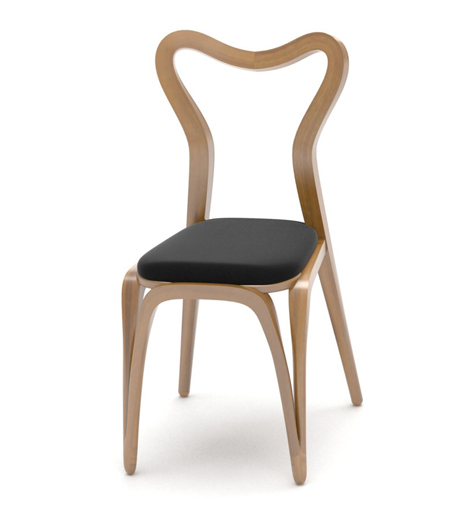
Fratelli Boffi supplied the information that follows:
ANIMALIA
“Nature and animal life dominate the narrative vocabulary of this new collection for Fratelli Boffi. Drawing on rural life, hunting, flora and fauna, and our relationship to it, each design has a sense of animation – and anima. Subtly curved legs and variety of skins, tweeds and arazzo ensure a feral sense of attraction between each of the pieces”. N. Coates
Again this year Fratelli Boffi meets expectations and presents a collection full of impact, once more calling upon imaginative designer Nigel Coates, after the ironic and iconoclastic Scubism presented in 2008, to bring out the company’s ability in working with wood.
The English designer indulges himself with his new and eccentric Animalia collection. Playing with forms and materials and drawing inspiration from the animal and plant world, he reworks the lines belonging to it , mixes and matches them using tweed fabrics and tapestries depicting hunting scenes.
Continuing along Fratelli Boffi’s path of research and discovery through the history of furnishings and the continuous cross-fertilisation between past and future, Animalia evokes a world drawing free inspiration from the designs of the mid-20th century, combining the use of hand-crafting construction techniques with experimentation with new materials.
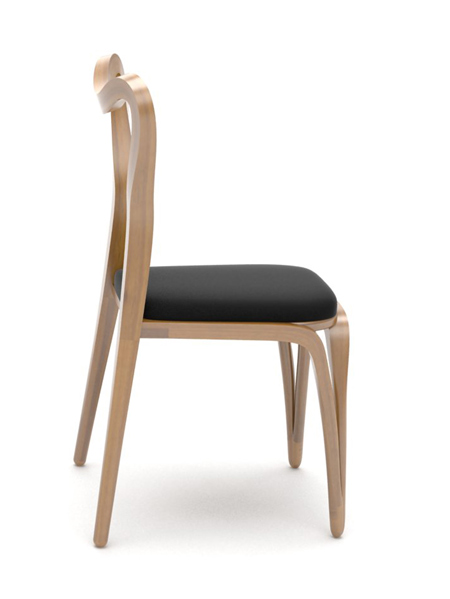
Almost as though furnishing were the obvious transformation and the natural evolution of organic and living shapes, Nigel Coates creates surreal imagery made of branches, animal horns and the sinuosity of the female form to create a series of furniture items revolving around a harmonious unity that is expressed through precious fabrics and woods.
The great art that distinguishes Fratelli Boffi is further highlighted by the wood - ziricote - selected for the creation of part of the collection; through its grain and peculiar colour characterised by shades of green and brown, this wood brings out the complicated carpentry work and refinement of the details.
Thus Fratelli Boffi takes up the challenge again, surprising us as it does every year and presenting technically excellent and increasingly sophisticated products, turning them into almost unique pieces.
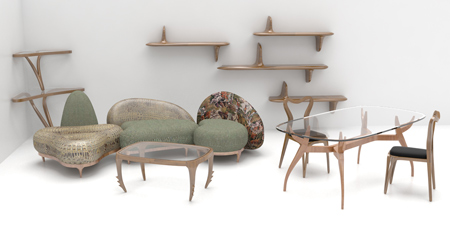
MODULAIR SOFA
They seem like rocks eroded by the wind: the diverse and irregular volumes of the Modulair sectional sofa cleverly enhanced by the precious fabrics that cover them; tweed, leather and tapestries selected to “enliven” this otherwise inanimate object with their various colours and different textures. Large cushions with round forms on a solid wood structure with old-fashioned feet are combined and completed by interlocking ovoid backs. Three modular types of upholstered piece, available in three different dimensions.
STAG TABLE
The kingdom of animals gives life to the Stag table, the legs of which are reminiscent of a stag’s horns. The glass top, with its soft oval form, reveals the sophisticated carving work of the structure, further embellished by special tropical wood used, ziricote.
DAINA CHAIR
Conceived to live alongside the Stag table, the Daina chair is inspired by the suppleness of the fallow deer and the roundness and grace of the female body, giving it further elegance and lightness. The structure, again made of ziricote, is folded like a ribbon, designing a stylized profile and holding a soft cushion in the middle. The simplicity and delicateness of this design genuinely conceals the complexity of the construction and the refinement of details.